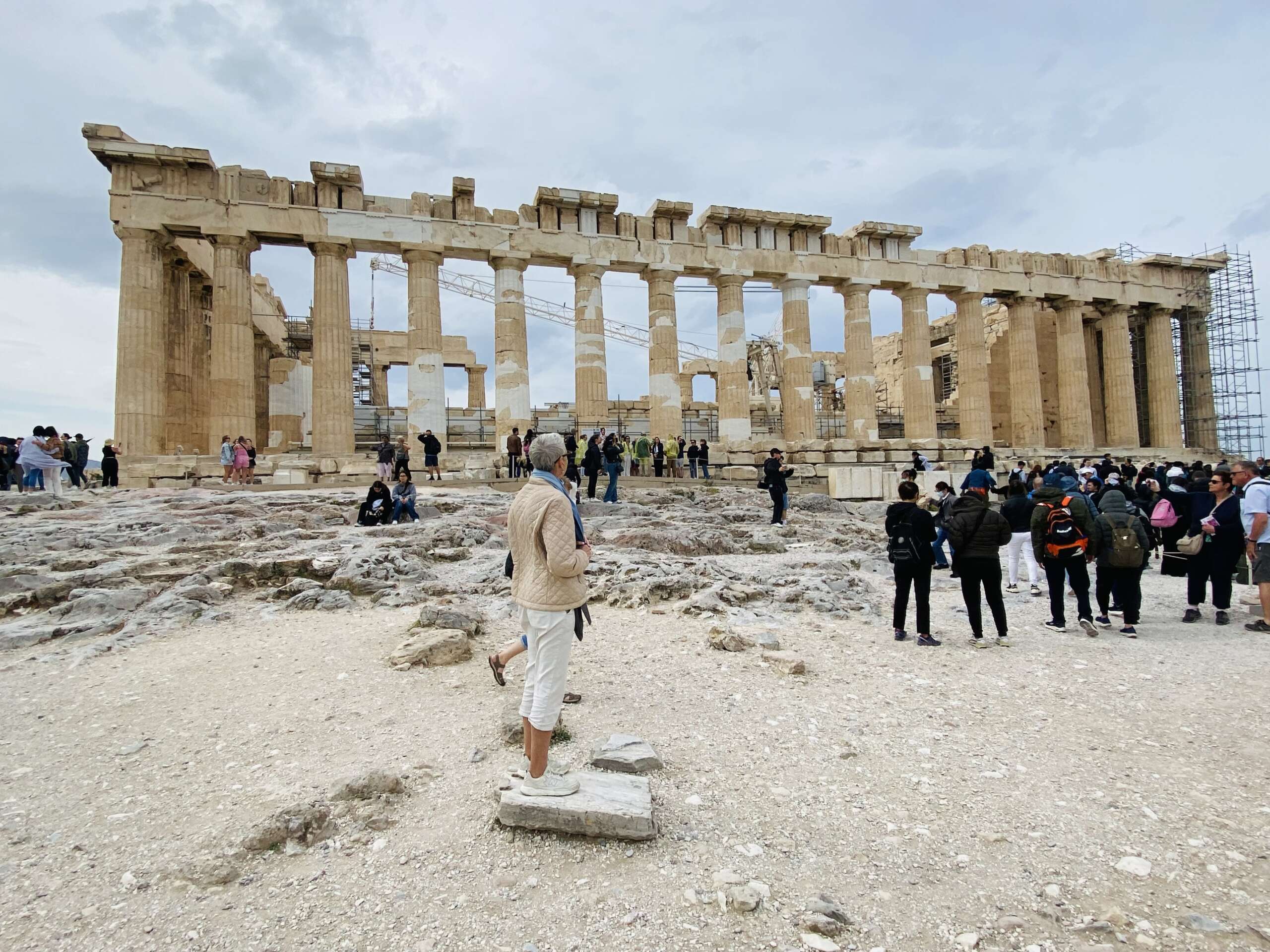
It’s been one week since we disembarked at the port of Piraeus in Greece, and each day not only brings another amazing discovery, but appears to be even better than the one before.

When planning this adventure, I soon discovered that travelling throughout Greece was not as simple as in other countries. In those countries, we would normally take a train to a sight, place or city, spend a day or two there exploring, then move on. Because of various reasons – cutbacks, the global financial crisis, austerity measures, the rail network in Greece is limited and travellers either base themselves in Athens and do day tours, take a train if they can, or catch buses. For our two weeks in Greece, we would be using a hybrid model of the three.

Our cruise included two night’s accommodation and so for the first couple of days we found ourselves at The President Hotel located in a more residential area of Athens. It proved a great introduction to the city as it allowed me the opportunity to get my nails done, provided affordable restaurant options, had a huge well-stocked supermarket and made us learn the Athens Metro system (very easy).

Athens is divided into neighbourhoods, each unique.
The more touristy are Plaka – cobblestones, historic landmarks and great shops. Monastiraki – historic landmarks, flea-markets, tavernas and great shops. Syntagma Square – a mix of old and new Athens with good cafes and great shops.
Day three saw us move to the Neo Luxury Suites situated just off Syntagma Square. An incredible apartment I found on Booking.com, complete with quirky ancient European lift and easy access to everything.

Using our hybrid travel model, we did organise a couple of excursions. One was to the Parthenon – the stunning ruins perched atop the rocky central hill in Athens known as the Acropolis. A truly fascinating place which I loved this time every bit as much as I did during a previous visit back in 2017 (read my blog here). This time, we could also visit the recently opened Acropolis museum. A world class building devoted to the Parthenon and its surrounds and with a life-sized recreation of the Parthenon’s exterior on the top floor.

Interestingly, our guide made it very clear that the reason this life-sized recreation was virtually empty of artifacts was because they were waiting for said artifacts to be returned from counties that had previously stolen them. For example, The Elgin Marbles.

The second of our organised tours from Athens was to Delphi. An ancient religious sanctuary dedicated to the god Apollo and considered by the ancient Greeks to be the centre of the world. Our excursion took 10 hours, involved 6 hours of bus travel, occurred on Mother’s Day and was incredible.


It was an experience to navigate the mountainous, rocky terrain that appears characteristic of Greece. To pass by cities like Marathon where the marathon originated, Thebes, home of the mythical king Oedipus and Arachova, home of Georgios Papanikolaou, inventor of the pap smear.
We spent our final time in Athens strolling the ancient narrow streets, stumbling upon yet more ancient ruins, shopping at the supermarket, sipping strong Greek coffees in cafes and allowing history to seep into our souls.
We did use the Hop on Bus to explore the more distant areas such as Athens beachside suburbs. They didn’t impress.



Because the buildings are old and small in central Athens, modern businesses like the supermarket and H&M have to make do. Accordingly, the poky supermarket I visited descended three stories below ground while H&M consisted of labyrinth rooms.
The Athens sewerage system is old with very narrow pipes. It cannot accommodate used toilet paper. This must be placed in the provided bins.
The Hondos department store has a cafeteria on its roof that offers reasonably priced food and spectacular bird’s-eye views of the Parthenon.

Day six saw us depart Athens and make the two-hour bus journey to Nafplio from where I am writing this blog. I’ll tell you all about it next time.

